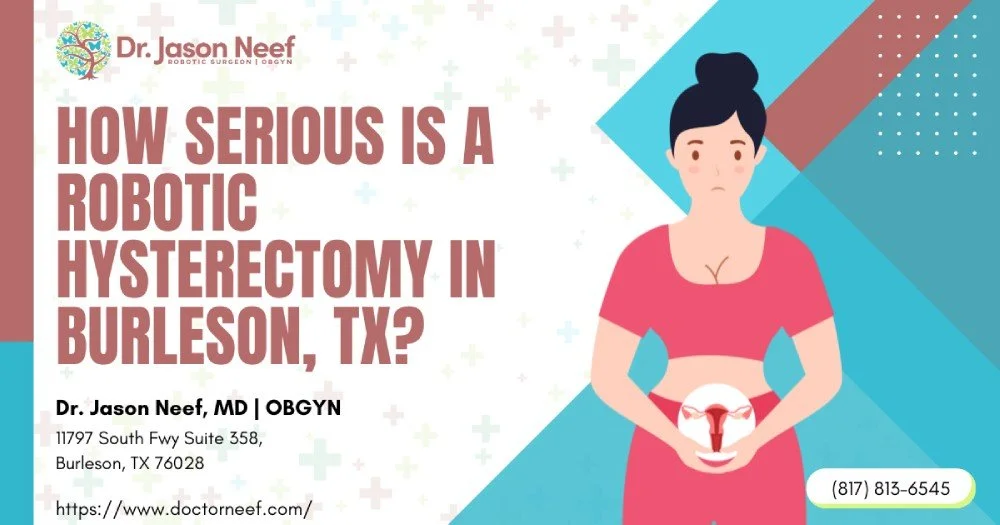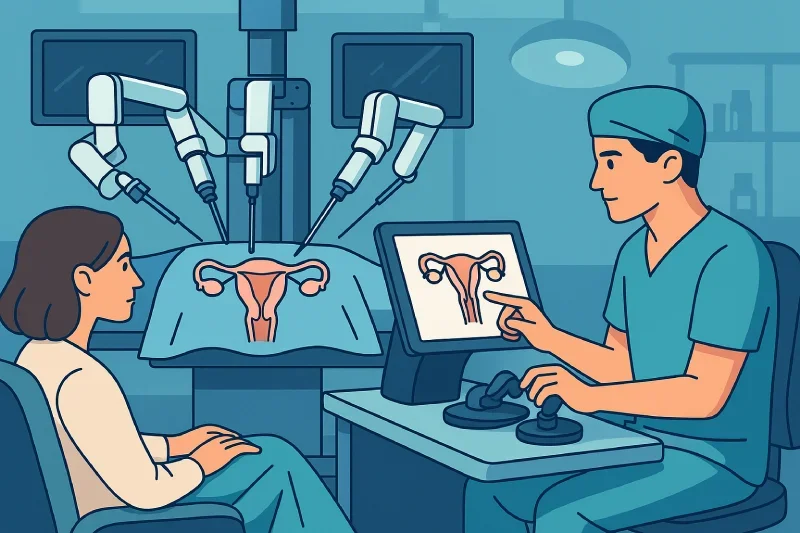What Type of Tubal Ligation Cannot Be Reversed in Burleson, TX?
Categories:
By: Ethan Cole
Many women in Burleson, Fort Worth, and the wider DFW area choose tubal sterilization believing it is a permanent birth control method. Later, when life changes and the desire to have children returns, they discover not every tubal ligation—or Essure procedure—can be undone. If most or all of the fallopian tube has been removed or the fimbrial end clipped away, reimplantation of tube tissue is impossible. In those cases, no amount of microsurgery, robotic surgery, or neo-salpingostomy can restore a natural pathway between ovary and uterus.
Below, you’ll learn exactly which procedures create an irreversible roadblock, how to verify what was done in your own case, and which fertility treatment makes sense next—whether that’s traditional tubal reversal surgery, Essure reversal, or in-vitro fertilization (IVF) at a local fertility clinic.
Key Takeaways
Complete salpingectomy and fimbriectomy remove critical tube length, so reversal is off the table.
Tubal clips, rings, or limited cautery usually leave 4 cm or more of healthy tube, and tubal reversal success rates can exceed 70 % in women under 35.
Essure coils sit inside the tube and the uterine cornua; removal of the Essure implant and repair can be difficult, but Essure reversal and laparoscopic tubal reversal are both done using tiny incisions at selected North Texas centers.
A quick records request from Texas Health Huguley Hospital, Harris Methodist, or any facility where you were sterilized shows exactly how much tube was taken.
When reversal isn’t possible, IVF—vitro fertilization is the process of fertilizing eggs in a lab—achieves 50–70 % pregnancy rates per cycle for many DFW patients.
Choosing a fellowship-trained surgeon who performs surgery 100+ times a year, often using the da Vinci robotic surgery system, boosts your chance of the best possible outcome and lets most patients go home the same day.
Understanding Tubal Sterilization Methods in Burleson, Bedford, and Fort Worth
The term “tubes tied” covers a dozen techniques. Some are quick laparoscopic tubal procedures done minutes after a C-section; others, like the Essure device, involve no abdominal incision at all. Each method of sterilization affects future fertility differently.
Commonly Utilized Procedures
Bipolar coagulation (cautery)
Silastic rings (Falope rings)
Hulka or Filshie clips
Partial salpingectomy (Pomeroy or Irving)
Fimbriectomy (removing the fimbria near the ovary)
Complete salpingectomy (entire tube excised)
Essure coils placed hysteroscopically inside the tube
How Much Tube Is Left—and Why It Matters
Clips & rings usually sacrifice < 2 cm, leaving 6–8 cm of healthy fallopian tube—ideal for tubal reversal.
Moderate cautery or a short salpingectomy may leave only 2–4 cm, putting you in a gray zone.
Fimbriectomy, complete salpingectomy, and some hysterectomy-with-salpingectomy cases leave nothing to reconnect—no surgeon can regrow that missing segment.
When the critical portion is absent, IVF or donor-egg IVF becomes the primary fertility treatment.
Why Complete Salpingectomy and Fimbriectomy Block Tubal Reversal
Your fallopian tube is a delicate 10–12 cm conduit. Reversal requires two healthy ends, good blood supply, and a smooth lumen. Once the fimbrial end is gone, a procedure called a neo-salpingostomy can create an opening, but pregnancy success is extremely low. If the entire tube is removed—as OB-GYNs sometimes do during a cesarean to prevent ovarian cancer—tubal surgery of any kind is futile.
Heavy cautery compounds the problem. It seals the tube yet also destroys micro-vessels needed for healing, raising ectopic pregnancy risk even if reconnection technically succeeds. That is why surgeons insist on at least 4 cm of pliable tube per side before accepting a tubal reversal case.
Special Case: Essure Procedure and Essure Reversal in North Texas
Women who chose Essure coils assumed they were selecting a low-maintenance form of birth control. Years later, many report pain, bleeding, or the simple wish to expand their family. Essure reversal differs from traditional tubal reversal because the metal implants sit inside the uterine wall. The surgeon must remove the Essure device, excise scarred tube, and then re-implant the healthy tube back into the uterus—often through robotic assisted micro-suturing.
Centers in Burleson, Lake Worth, Lewisville, Bedford, and the Austin area offer Essure reversal performed using the da Vinci robotic surgery system. Because tiny incisions replace a large laparotomy, most patients head home the same day and can resume normal activity within a week. However, Essure reversal success rate ranges from 35 % to 60 % and depends on:
Whether the coil fractured during removal
Remaining tube length for reattachment
Scar tissue inside the uterus
For women over 38 or anyone with significant uterine damage, IVF in a Fort Worth fertility clinic may yield a faster pregnancy and lower risk of ectopic pregnancy.
Step-by-Step Guide to Confirming Your Candidacy
Obtain your operative note and any pathology from the facility where your OB-GYN performed tubal ligation—Texas Health Huguley Hospital, Baylor Scott & White, or John Peter Smith. Texas law guarantees your right to these records.
Send images or PDFs to a reproductive surgeon who performs tubal reversal and Essure reversal regularly; a virtual consult works fine for out-of-town clients from Grand Prairie, Lake Worth, or the wider DFW area.
Schedule day-three labs for AMH, FSH, and estradiol. Very low ovarian reserve might push you toward IVF regardless of tube status.
Arrange a hysterosalpingogram (HSG) 10 days prior to surgery date. The dye study estimates tube length and checks the uterine cavity for scarring from prior procedures.
Confirm partner semen parameters; a normal sperm count must be present, or IVF with ICSI may become necessary even after a perfect reversal.
Comparing Tubal Reversal Surgery to IVF and Other Fertility Treatments
Both options have pros, cons, and costs.
Tubal reversal surgery (traditional or robotic) at a North Texas center costs $7,500–$10,000 including anesthesia. Pregnancy can occur naturally each cycle at the time of ovulation, saving future expenses if you want multiple kids.
IVF in Fort Worth averages $13,000 per cycle plus meds. Yet vitro fertilization is the process that bypasses tubes entirely, making it ideal if tube length is inadequate, you are over 40, or male-factor fertility is significant.
Combined approach: a few couples attempt reversal first, then pivot to IVF if no conception after 12 months. Ask your surgeon about their conversion plan and whether they credit part of the surgical fee toward IVF at an affiliated fertility clinic.
Choosing a Surgeon, Setting a Surgery Date, and Going Home the Same Day
The learning curve for microscopic suturing of a 2-mm diameter tube is steep. Look for:
Fellowship training in reproductive endocrinology & infertility or advanced gynecological surgery
100+ tubal reversal and Essure reversal cases per year
High-definition operative microscopes or a da Vinci robotic platform
Published live-birth—not just pregnancy—success rates by age and ligation type
Most Burleson patients have surgery scheduled for early morning, spend 3–4 hours in recovery, and are home the same day with only acetaminophen or limited narcotics for discomfort. Small adhesive dressings cover the tiny incisions; showering is permitted 24 hours later.
Financial & Insurance Tips
Few commercial plans cover reversal because they label it elective, but they will often cover pre-operative labs and imaging.
Some employers in the DFW area (American Airlines, Toyota, and several tech companies in north Texas) offer fertility reimbursement funds that can be applied to either reversal or IVF.
Non-profit grants such as Pay It Forward Fertility and Bundl provide partial funding; deadlines fall months before the surgery took place, so apply early.
Texas Health Huguley offers bundled self-pay packages for laparoscopic tubal reversal and Essure reversal, keeping costs transparent.
0 % medical credit cards or monthly payment plans allow many couples to move ahead without delaying their family-building timeline.
Take the Next Step Toward Your Best Possible Outcome
Whether you live in Burleson, Bedford, Lewisville, or drove in from the Austin area, the roadmap is the same: gather records, consult a high-volume surgeon, weigh reversal versus IVF, and choose the path that maximizes success rate while honoring your budget and timeline. Tubal sterilization doesn’t have to end your dream of another baby—but the details of your original procedure matter. Act today, and you could be holding a newborn in your arms sooner than you think.
Schedule your tubal reversal consultation today.
Call (817) 568-8731Categories:
Frequently Asked Questions
-
Most surgeons instruct couples to wait six weeks for incisions to heal and inflammation to subside. After that, you can attempt pregnancy the very next time of ovulation. Many Burleson patients conceive within six months, but age, tube length, and sperm quality influence each couple’s timeline.
-
Robotic-assisted reversal done using the da Vinci robotic platform offers better magnification, tremor-free suturing, and tiny incisions that minimize pain. Clinical studies from Texas Health Huguley Hospital show equal or better pregnancy rates compared with open, traditional tubal reversal, plus most women go home the same day.
-
Yes. A skilled surgeon can perform surgery through laparoscopy or robotic assistance to extract the Essure device and reconstruct the tube, avoiding hysterectomy in most cases. Complete uterine removal is reserved for severe pain or extensive uterine damage unrelated to fertility goals.
-
Standard tubal reversal success rates reach 60–80 % live birth in women under 35. Essure reversal success rate is lower—around 40–60 %—because more tube must be removed and re-implanted into the uterus. IVF may be recommended for older patients or limited tube length.
-
Any tubal surgery, including laparoscopic tubal reversal and Essure reversal, raises ectopic risk to 5–10 %. Early ultrasound at six weeks gestation verifies location. Your surgeon will discuss warning signs and arrange fast access to care in Fort Worth or Lake Worth if needed.
-
Possibly. IVF doesn’t damage the remaining tube. As long as adequate length and blood supply exist, a tubal reversal procedure can follow failed IVF. However, most couples consider age and remaining fertility before investing in two major treatments sequentially.
-
Using hormonal birth control pills in the weeks prior to surgery suppresses ovulation, reducing ovarian enlargement and making laparoscopic entry safer. Your surgeon may recommend stopping pills a few days prior to surgery to minimize blood-clot risk.
-
Yes. Complications like bleeding or infection are billed with standard gynecological surgery codes. Even plans that exclude fertility procedures generally cover emergency care and any unplanned hospitalization at facilities such as Texas Health Huguley.
-
Absolutely. If patency testing after reversal shows blocked tubes, your fertility clinic can proceed to IVF directly. Egg retrieval bypasses the tubes, so no second abdominal incision is needed; you simply start ovarian stimulation medications and schedule retrieval.
-
Not usually. High-volume surgeons in Burleson, Fort Worth, and the broader DFW area perform hundreds of reversals a year. Staying local eases pre-op testing, lets you recover at home the same day, and keeps follow-up appointments convenient should questions arise.













